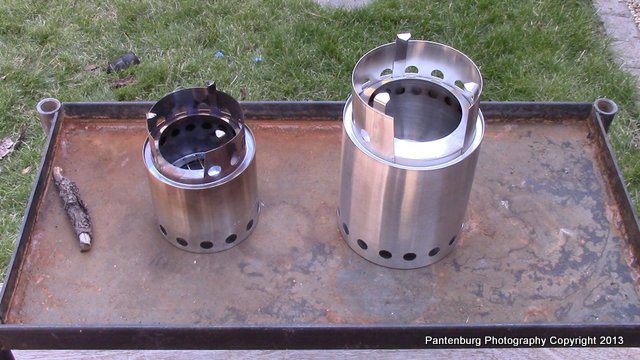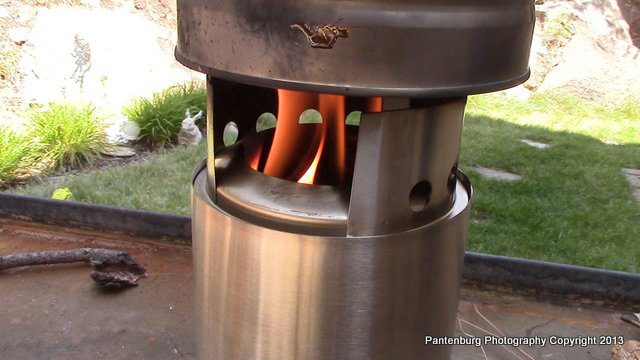Disclaimer: Solo Stove is an affiliate with SurvivalCommonSense.com. Before advertising was accepted, the product underwent rigorous field testing. I was not reimbursed for this review.
My Solo Stove has been a constant companion in the backcountry since I got it last year. But the latest offering from the company, the Titan, may prove to be even more useful to the prepper/survivalist.
by Leon Pantenburg

The original Solo Stove is best suited for backpacking, while the larger Titan can handle the major cooking and boiling activities.
My backpacking size Solo Stove has earned its keep. Since I got it last year, the stove has gone on several outings and proved to be very valuable. It has also been loaned out to friends and other Boy Scout leaders for evaluations, and it has passed with flying colors.
The Solo Stove is a natural convection inverted downgas gasifer stove, according to the company website, that incorporates a secondary combustion for a more efficient and cleaner burn. The bottom vents allow air to enter and flow up the bottom of the grate to feed the primary combustion, a top down smolder. In addition, air entering from the bottom vents heats up within the inner wall and rises up and out the top firebox vents causing a secondary combustion at the top of the stove.
The value to me lies primarily in weight and cost of fuel. As a middle-aged baby boomer with two artificial
Click here to buy survival kitsknees, I have to go lightweight backpacking or stay home. The Solo Stove only weighs about eight ounces, and it fits nicely in my 42 ounce metal cup. Since the Solo Stove is fueled with biomass, there is no need to carry fuel – another weight savings. I cooked one entire meal using wood chips I picked up from around the splitting block.
The Solo Stove doesn’t just burn wood, according to the website, but actually cooks the smoke out of the wood and then burns the smoke twice. This technique makes for a cleaner, more efficient burn, the company claims, which means less smoke.
For the backpacker or small party, the Solo Stove is ideal.
But size is a limitation if you’re cooking larger meals for groups. And during a long term emergency situation, boiling water for purification will be a priority. In these cases, a bigger stove could be a better choice.
Subsequently, I was eager to take a look at the Solo Stove Titan, the newest biostove from the company.
Here’s the specs:
Packed size: Height 5.6 inches, Width 5.1 inches
Materials: 304 stainless steel, nichrome wire*
Assembled size: Height 7.9 inches, Width 5.1 inches
Fuel: sticks, twigs, pine cones and other biomass
Weight: 16.5 oz
Boil time: 4-6 mins (32 fl oz of water)
Testing the Titan didn’t reveal any surprises. Fuel was gathered off a forest floor, and I made no particular effort to find dry or quality twigs, sticks or pine cones.
Lighting is easy. Just ignite a cotton ball infused with petroleum jelly and then add fuel. The stove was able to take 32 ounces of tap water from room temperature to boiling, in an uncovered tin can, in about five minutes. The overall time would have been less if I would have had a lid on the can.
The Titan works just like its smaller cousin: With monotonous ease and efficiency.
Most likely, I won’t use the Titan as much as I have my original Solo Stove. The original is the perfect size for backpacking, and it fits precisely inside the 42-ounce metal cup that rides in my daypack. The Titan may go along if several of us are packing together and want to cook communal meals. It would work really well with a coffee pot!
But if I ever need to boil a lot of water after an emergency, I hope there is a Titan handy.



Leave a Reply